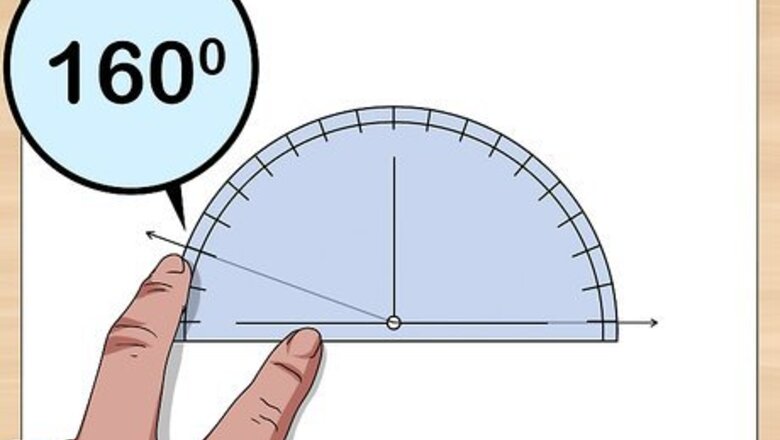
views
Constructing a Bisector with a Protractor

Measure the angle. Place the origin hole of the compass on the angle’s vertex, lining up the base line with one of the angle’s rays. Look at the degree mark where the other ray falls. This will tell you the degree measurement of the angle. For example, you might measure an angle that is 160 degrees wide. Remember that protractors have two sets of numbers. To know which set of numbers to look at, think about the size of the angle. Obtuse angles are greater than 90 degrees, and acute angles are less than 90 degrees.

Divide the number of degrees in half. An angle bisector divides an angle into two equal parts. So, to find where the angle bisector lays, divide the number of degrees in the angle by 2. For example, if the angle is 160 degrees, you would calculate 160 2 = 80 {\displaystyle {\frac {160}{2}}=80} {\frac {160}{2}}=80. So, the angle bisector is at the 80-degree mark of the angle.
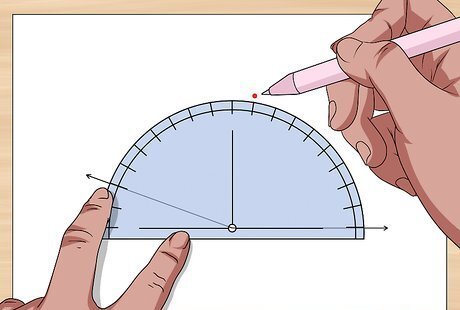
Draw a point marking the measurement of the bisector. Again, line up the origin hole with the angle’s vertex, and line up the base line with one of the rays. Find the halfway point using the protractor. Mark this point in the angle’s interior. For example, if the bisector of a 160-degree angle lies at the 80-degree point, you would find the 80-degree mark on the protractor and draw a point at this location in the angle’s interior.

Draw a line from the vertex to the point. Use the straightedge of the protractor to connect the vertex to the halfway point of the angle. The line you draw is the angle’s bisector.
Constructing a Bisector with a Compass
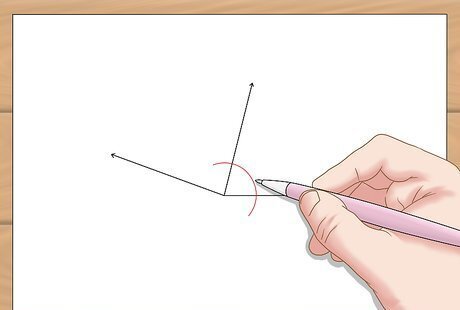
Draw an arc across both rays. Open the compass to any width, and place the point of the compass at the angle’s vertex. Swing the compass so that the pencil draws an arc that crosses both rays of the angle. For example, you might have angle BAC. Place the compass tip on point A. Swing the compass so that it draws an arc intersecting ray AB at point D, and ray AC at point E.
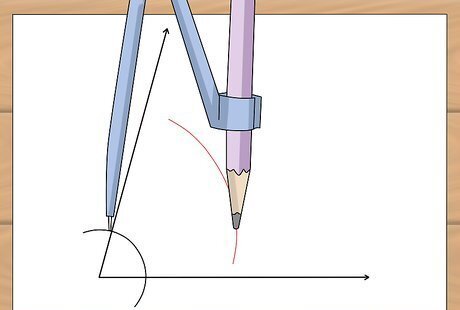
Draw an interior arc. Move the compass so that the point sits on the location where the first arc intersects the first ray. Swing the compass, drawing an arc inside of the angle. For example, place the compass tip on point D and draw an arc inside the angle.
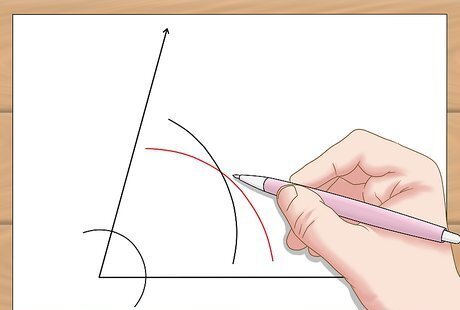
Draw a second interior arc intersecting the first interior arc. Without changing the width of the compass, move the point to the location where the first arc intersects the second ray. Swing the compass, drawing an interior arc that intersects the first interior arc you drew. For example, place the compass tip on point E and draw an arc intersecting the first interior arc. Label the point of their intersection point F.

Draw a line from the vertex to the point where the arcs intersect. Use a straightedge to ensure that the line is accurate. This line bisects the angle. For example, use a straightedge to draw a line connecting points F and A.


















Comments
0 comment